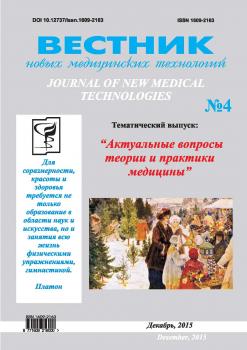For many years, algebraic constructive logic model is used for multivariate analysis in medicine and biology. The classic version of this model includes the exclusion of contradictory accounts, i.e. when the target is achieved and not achieved in the presence of the same values of the factors. In this case, the lines as appropriate to achieving target, and its failure are removed, including significant proportions. Another feature of this algorithm is the partial overlap of the intervals to determine the factors resulting in components in achieving a target and not achieving despite the exclusion of contradictory accounts. The authors explain this by the fact that the classical algorithm generates the detection limits of the factors in resulting components with some capture values that are related to the lines of not achieving the target (up to inappropriate values). To some extent this reduces the accuracy of the mathematical model. A further feature of the algorithm is the necessary to optimize mathematical model by excluding re-coating lines. This is acceptable, but not optimal. This requires additional procedures at the final stage of formation of the mathematical model. The proposed version of the algebraic model of constructive logic allows to eliminating the above drawbacks. This is achieved the measure of approximation and a way of combining the cases in the resulting components. The proposed algorithm was tested using specially designed software that allows to exclude controversial cases and to form a mathematical model. Testing showed that the proposed algorithm is better than the classic version and meets the objectives of multivariate analysis in medicine and biology.
mathematical model, analysis, resulting component, algorithm.
Введение. Обработка данных при многофакторном анализе с целью выявления закономерностей, способствующих достижению результата, всегда считалась сложной аналитической задачей. С этой целью используются не только нейронные сети, но и алгебраическая модель конструктивной логики (АМКЛ).
АМКЛ разработана в России в 1983 году и предназначена для построения многофакторной нелинейной математической модели [1-3]. В последние 20 лет она используется прежде всего для анализа в медицине и биологии [4,5,7,11-17,20,23]. Наряду с этим АМКЛ используется для построения экспертных систем [19,30].
АМКЛ в своей основе является моделью интуи-тивистского исчисления предикатов, отображающей индуктивную часть мышления - формулирование сравнительно небольшого набора кратких выводов из массивов информации большой размерности. С общей точки зрения систему можно применять как средство, согласующее информационные каналы исследуемого объекта и пользователя [1-9]. С философской точки зрения АМКЛ обеспечивает отыскание закономерностей в хаосе.
Алгоритм АМКЛ отдалённо напоминает синтез цифровых автоматов с нахождением тупиковой дизъюнктивной формы. Только в данном случае факторы представлены любыми числовыми значениями, а не только 0 или 1 [31].
Исходными данными для построения модели является таблица. В ней данные могут быть представлены как в виде вещественных чисел, так и в виде значений булевых или fc-значной логики. Каждая строка в этой таблице рассматривается как случай, в котором





